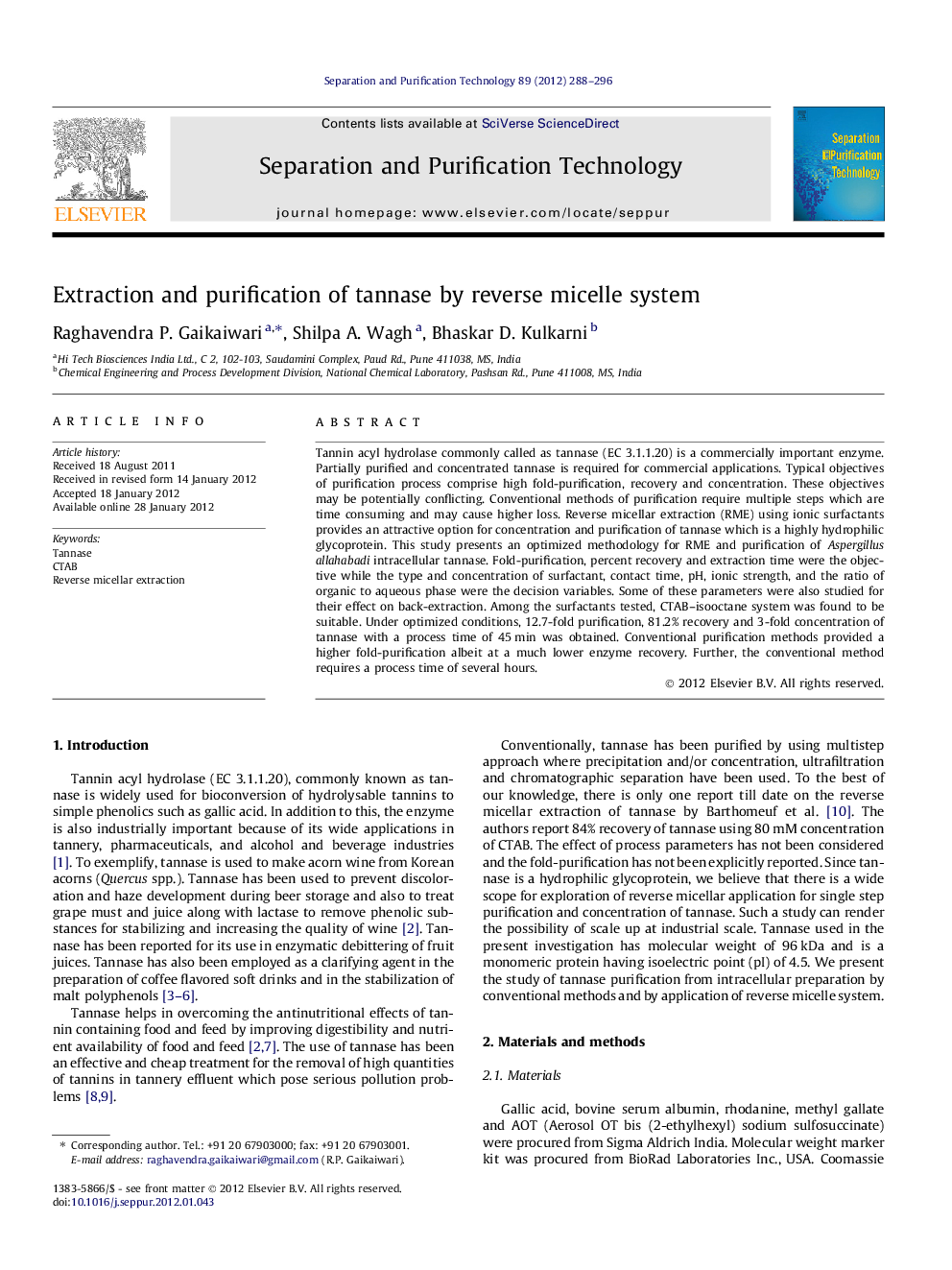| Article ID | Journal | Published Year | Pages | File Type |
|---|---|---|---|---|
| 642282 | Separation and Purification Technology | 2012 | 9 Pages |
Tannin acyl hydrolase commonly called as tannase (EC 3.1.1.20) is a commercially important enzyme. Partially purified and concentrated tannase is required for commercial applications. Typical objectives of purification process comprise high fold-purification, recovery and concentration. These objectives may be potentially conflicting. Conventional methods of purification require multiple steps which are time consuming and may cause higher loss. Reverse micellar extraction (RME) using ionic surfactants provides an attractive option for concentration and purification of tannase which is a highly hydrophilic glycoprotein. This study presents an optimized methodology for RME and purification of Aspergillus allahabadi intracellular tannase. Fold-purification, percent recovery and extraction time were the objective while the type and concentration of surfactant, contact time, pH, ionic strength, and the ratio of organic to aqueous phase were the decision variables. Some of these parameters were also studied for their effect on back-extraction. Among the surfactants tested, CTAB–isooctane system was found to be suitable. Under optimized conditions, 12.7-fold purification, 81.2% recovery and 3-fold concentration of tannase with a process time of 45 min was obtained. Conventional purification methods provided a higher fold-purification albeit at a much lower enzyme recovery. Further, the conventional method requires a process time of several hours.
► Tannase purification and concentration using CTAB/isooctane reverse micelle (RME). ► RME showed 80% tannase recovery with 12.84-fold purification. ► In RME forward and backward extraction was found to be the function of pI. ► A single step RME required less time (45 min) than conventional multistep process.
